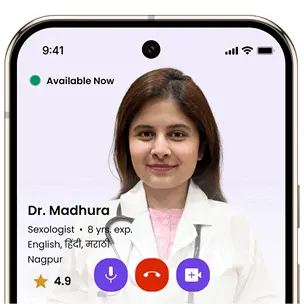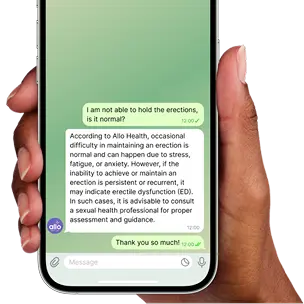Sexual Consent Education
Sexual consent education is about understanding and respecting boundaries in any sexual or intimate interaction. It teaches that consent must be clear, voluntary, and ongoing, meaning both partners agree without pressure, every time. This education helps individuals recognize what consent looks like, how to ask for it, and how to respond if it’s withdrawn. It also addresses issues like communication and respect, empowering people to build healthier, safer, and more respectful relationships. Whether in schools, relationships, or online spaces, consent education plays a crucial role in reducing sexual violence and promoting mutual respect.
Sexual consent is all about mutual respect, understanding, and feeling safe with your partner. But even though it’s so important, many people aren’t always clear on what it means.
This article will help you understand consent in simple terms: how to ask for it, how to give it, and how to know when it’s not there. We’ll also bust some common myths and talk about why honest communication matters so much when it comes to intimacy. Whether you’re in a new relationship or just curious to learn more, this guide is here to help you feel more confident and informed.
Understanding Consent, Sexual Consent, and Boundaries
Consent [1] is a pretty simple concept. Just like planning to watch a movie together with your friends. Before you can do this, you need to check to make sure that they are cool with it, right?
Consent means saying ‘yes’ clearly and willingness to a specific activity, with a full understanding of what’s happening and without any pressure.
And then comes Sexual Consent, which is an agreement between people to engage in a sexual activity. Sexual activity includes kissing, sexual touching and sexual intercourse (oral, anal, vaginal, hand sex).
Sexual consent is of various types; it can be given freely with no one forcing, being pressured, or being tricked. Sexual consent is well-informed and can be revoked whenever the individual wants to.
Many governments have created a guide to help schools, workplaces, and communities teach young people about healthy sexual relationships, respect, and how to give and get consent.
Elements of Sexual Consent
Sexual consent is just like the pillar of a relationship, be it a casual one or even a marriage!
Well, sometimes this consent will not only be a yes or a no, but it is much more than that.
Various characteristics ensure all the individuals involved in the sexual act are on the same page. Just remember this acronym: F-R-I-E-S
- Freely Given
- Reversible
- Informed
- Enthusiastic
- Specific
Involving all these characteristics in your sex life will help you to develop a safe, more respectful, and mutually acceptable and enjoyable experience. Moreover will deepen your bond as it truly shows respect between people.
How to Ask for Sexual Consent
Asking for sexual consent is as easy as trying out a new recipe from your recipe book. Following and rechecking every step of the recipe. It is not just a direct one-time question; it is a step-by-step procedure for every new activity you do. And yes, it seems to break the mood. Whereas asking for consent feels captivating.
“I personally don’t think it kills the mood. I find it quite appealing, honestly. It’s actually a turn-on for me.” Confessed by someone on Reddit [2] Anonymously
Use clear, direct questions like:
- “Can I kiss you?”
- “Is this okay?”
- “Would you like to try this with me?”
You can also express your desires while giving your partner room to respond:
- “I’d like to try something new. How do you feel about that?”
- “I’d love to… What do you think?”
These questions help open up a health conversation and promote trust and make things a lot transparent between you and your partner. The key is to keep communication open and be as direct as you can be, check in regularly, and make sure both partners are comfortable and in sync from start to finish.
Recognising When Sexual Consent Is Given
Recognising when sexual consent is given involves more than just hearing a “yes”; it requires paying close attention to clear communication and body language from all parties involved. Here’s how to identify when consent is truly given:
- Clear and Verbal Confirmation: The person says “yes” or expresses interest using clear, affirmative language. Phrases like “I want to,” “Let’s do this,” or “I’m comfortable with this” are indicators of consent.
- Enthusiastic Participation: Sexual consent has recently begun to shift towards ‘yes means yes’ standards of affirmative consent. True consent is exciting. The person actively engages in the interaction and appears comfortable and eager, not hesitant.
- Continuous: Consent isn’t a one-time check [3]; it must be continuous. Just because someone agreed to something before or once doesn’t mean they’re okay with everything or with continuing the same throughout. At any moment, if someone changes their mind, consent is no longer present.
- Fully Aware and Free from Pressure: Consent can only be given when a person is fully aware and not under the influence of substances like alcohol or experiencing pressure or manipulation.
- Body Language Matters: Positive body language that can be relaxed posture, making eye contact, comfortable touch, and a smiling face supports verbal consent. Hesitation, pulling away, or silence can signal discomfort or lack of consent. Recognizing non-verbal consent signals is essential for ensuring that all parties feel respected and empowered during intimate interactions [4].
If these factors are not seen in a person while conversing, then it’s a sign that the individual is not interested in giving sexual consent. Consent isn’t just about hearing “yes,” it’s about making sure that “yes” is genuine, enthusiastic, and ongoing. True sexual consent is freely given, clearly communicated, and supported by positive body language. When in doubt, check in with your partner. Consent should feel respectful, mutual, and empowering for everyone involved.
What Consent Is Not
Sometimes, consent can get misunderstood or ignored. To help clear things up, here are some situations where consent is not truly given, even if it might seem like it.
- Feeling pressured to say “YES” because you’re scared the other person might get angry, upset, or annoyed if you say “NO”.
- Being touched or having sex while you’re asleep or passed out. You can’t give consent if you’re not awake.
- Continuing with sexual activity even when your body language shows you’re uncomfortable, like pulling away, freezing, or looking unsure. If you’re not clearly saying yes, it’s a no.
- Assuming someone wants sex because they were flirting, accepted a drink, or wore a short skirt. Clothes and flirting are not an invitation for sex.
- Since they had sex with you before. It does not mean they are open to having you every time you want
- Assuming that if someone says yes to one sexual activity, they’re saying yes to everything. Consent has to be clear for each specific thing.
- Removing a condom without permission during sex (called “stealthing” [5]) is a clear violation. If they agreed only to have protected sex, that’s what must happen.
Why Sexual Consent Education Is Important
- Prevents Sexual Violence
When people are taught what consent is and what it isn’t, they are less likely to cross boundaries and more likely to recognize and stop harmful behavior [6]. Comprehensive sexuality education (CSE) has been shown to prevent gender-based violence by teaching young people about mutual respect and the importance of consent. - Builds Healthy Relationships
Consent education encourages open communication, respect, and empathy. The foundations of any healthy intimate relationship. - Empowers Individuals
Knowing how to express boundaries and ask for consent helps people feel more confident and in control of their bodies and experiences. - Corrects Harmful Myths
Misconceptions like “they didn’t say no, so it’s okay” or “if someone agrees once, they always agree” can lead to harmful situations. Education helps break these myths.
Ignoring consent can lead to serious emotional trauma and legal consequences,” which is why education around this topic is so important.
Violation of Sexual Consent
Sexual consent is violated when someone engages in sexual activity without the other person’s clear and informed agreement.
This includes situations involving force, threats, manipulation, pressure, or when the person is unable to consent due to intoxication (under the influence of alcohol or drugs) [7], unconsciousness, or sometimes even age. Consent is also violated if someone continues after the other person withdraws their consent or if the person has changed his/her mind during the act.
In legal terms [8], this can amount to sexual assault, harassment, or rape, depending on the severity and the laws of the region.
The number of rape cases in India has gone up in recent years. While some changes have been made to the laws, there are still many issues that need fixing. Victims often find it hard to prove they didn’t agree to sex, so the law (Section 375 of the Indian Penal Code) must be interpreted carefully and fairly.
Sometimes, a victim may agree to sex out of fear, not because they want to; this should not be seen as true consent. The 2013 Criminal Law (Amendment) Act [9]was created to expand the definition of rape and increase punishments.
The consequences under the law can be serious and may include criminal charges, imprisonment, fines, and a permanent criminal record. In addition to legal penalties, the perpetrator may also face social, professional, and psychological consequences. Laws around consent exist to protect individuals and ensure that all sexual activity is respectful and mutual.
Organizations or campaigns to promote consent education
Teaching people about consent is one of the best ways to stop sexual violence and promote respect in relationships.
Spreading awareness through everyday actions, like school lessons, role-plays, peer-led talks, and community support, can make a big difference.
Here are five simple yet powerful ways we can help everyone learn about consent and build a safer world.
- Add Consent Education to Schools
Teaching consent early helps children grow up understanding, respecting, and setting boundaries. Even if the school’s traditional curriculum doesn’t include it, lessons can be introduced through simple activities like sharing toys or role-playing. These early lessons build the foundation for healthy relationships later. - Let Youth Learn from Other Youth
Teenagers often listen more to peers than to adults. Campaigns, guest speakers, or peer support groups led by youth can result in better learning. When young people lead the conversation, it feels more real and encourages open discussion without any hesitation. - Use Skits or Role-Play
Acting out life like consent situations helps people learn in a fun and memorable way. This makes the concept of consent easier to understand. It also encourages empathy and problem-solving. - Host Bystander Training
Teaching people how to safely intervene when they see something wrong empowers communities to take action. These trainings show how to speak up or get help without escalating a situation.[10] - Work with Local Organisations
Partnering with local consent or anti-violence groups brings expert resources and support. These groups often provide training, speakers, and materials that can strengthen your efforts. Collaborating also builds a united front for change in the community.
"The following blog article provides general information and insights on various topics. However, it is important to note that the information presented is not intended as professional advice in any specific field or area. The content of this blog is for general educational and informational purposes only.
Book consultation
The content should not be interpreted as endorsement, recommendation, or guarantee of any product, service, or information mentioned. Readers are solely responsible for the decisions and actions they take based on the information provided in this blog. It is essential to exercise individual judgment, critical thinking, and personal responsibility when applying or implementing any information or suggestions discussed in the blog."






